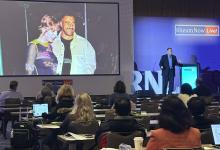JAK Inhibition in Autoinflammatory Syndromes Interferonopathies Save

While many autoinflammatory syndromes are driven and managed with select inhibition of IL-1, IL-18 or IL-6, a subset are driven by type I interferon and are referred to as interferonopathies. These monogenic IFN–mediated disorders present in infancy with fevers, systemic inflammation, an IFN response gene signature, inflammatory organ damage, and high mortality.
Now researchers from the NIH have demonstrated that the use of the JAK inhibitor baricitinib, with IFN-blocking activity in vitro, leads to clinical disease improvement.
Researchers treated 18 patients, between 2011 and 2017, who were diagnosed with CANDLE (10 patients; chronic atypical neutrophilic dermatosis with lipodystrophy and elevated temperatures), 4 patients with SAVI (stimulator of IFN genes–associated [STING-associated] vasculopathy with onset in infancy), and 4 patients with other interferonopathies were enrolled in an expanded access program.
Treatment for a mean of 3 years (1.5–4.9 years) led to symptom symptom score decreases from 1.3 (interquartile range [IQR], 0.93–1.78) to 0.25 (IQR, 0.1–0.63) (P < 0.0001) and reduced steroid use (14 patients) from 0.44 mg/kg/day to 0.11 mg/kg/day, and their IFN biomarkers decreased. Among the 10 CANDLE patients half achieved lasting clinical remission.
Three patients discontinued treatment because of lack of efficacy; 2 of these had genetically undefined conditions.
The most common adverse events were upper respiratory infections, gastroenteritis, and BK viruria and viremia.
These patients are usually poorly responsive to DMARDs or biologics targeting IL-1, TNF, and IL-6., In these studies the JAK1,2 inhibitor, baricitinib, improved inflammatory and IFN biomarkers in patients with the very rare disorders CANDLE, SAVI and other interferonopathies.








If you are a health practitioner, you may Login/Register to comment.
Due to the nature of these comment forums, only health practitioners are allowed to comment at this time.